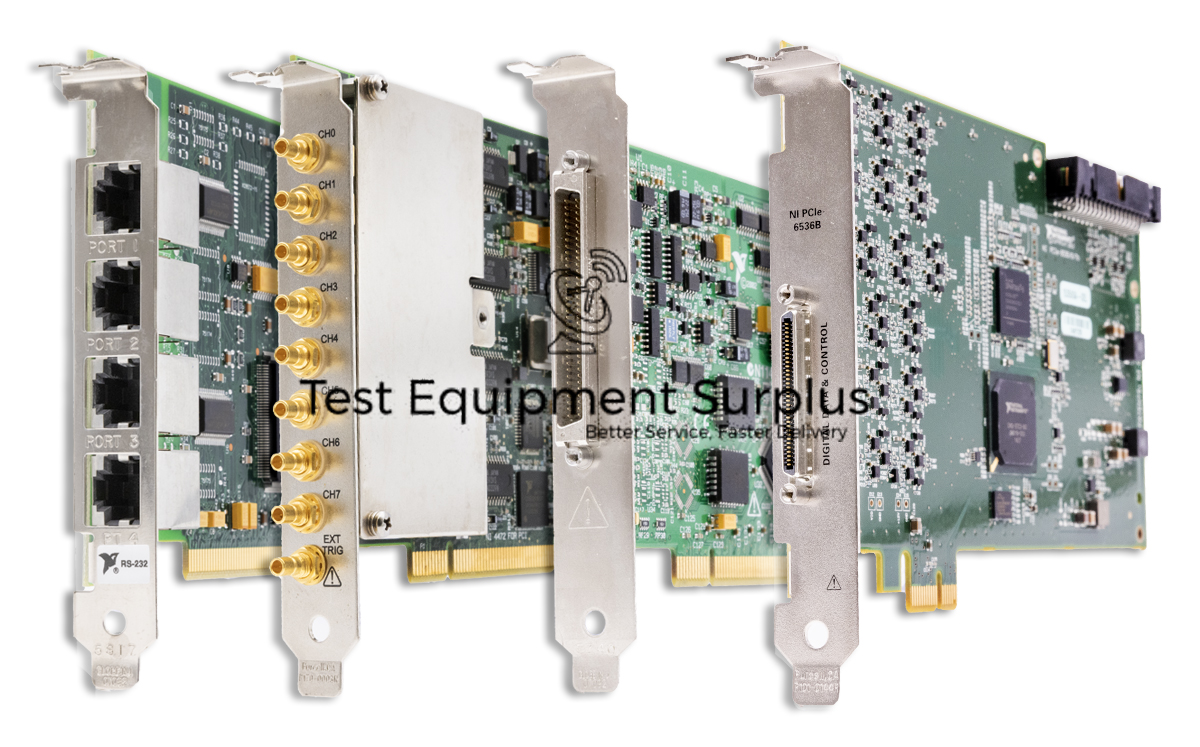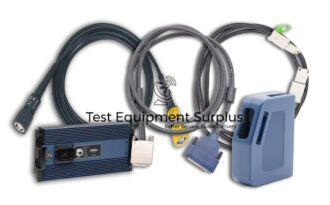Description
The National Instruments PCI-6519 Digital I/O Device, with a part number 779085-01, provides a robust set of features for advanced data acquisition and control. This device is equipped with 16 source/sink input lines and 16 sink output lines, allowing for versatile interfacing with various digital signals. It is capable of handling a maximum input voltage of ±30 VDC and a maximum input current of 12.5 mA per line, ensuring compatibility with a wide range of sensors and actuators.
The PCI-6519 boasts a propagation delay of 75 µs, demonstrating its quick response capabilities. It is designed to work seamlessly with software packages such as NI-DAQmx driver software, LabVIEW, and LabWindows/CVI, enabling users to create sophisticated applications with ease. The inclusion of self-calibration, supported by the integrated NI-MCal algorithm, enhances the accuracy and reliability of measurements.
Connectivity is facilitated through a 37-pin male D-SUB I/O connector, providing a secure and standard interface for wiring. Despite its powerful features, the PCI-6519 maintains a compact form factor, weighing just 2.5 oz and measuring 5.54 x 4.47 inches in dimensions. The device operates efficiently within a temperature range of 0 °C to 55 °C and can be safely stored in conditions ranging from –20 °C to 70 °C.
| Feature | Specification |
|---|---|
| Product Name | National Instruments PCI-6519 Digital I/O Device |
| Part Number | 779085-01 |
| Input Lines | 16 source/sink |
| Output Lines | 16 sink |
| Maximum Input Voltage | ±30 VDC |
| Maximum Input Current | 12.5 mA/line |
| Propagation Delay | 75 µs |
| Software Compatibility | NI-DAQmx driver software, LabVIEW, LabWindows/CVI |
| Self-Calibration | Supported with integrated NI-MCal algorithm |
| I/O Connector | 37-pin male D-SUB |
| Weight | 2.5 oz |
| Dimensions | 5.54 x 4.47 in |
| Operating Temperature Range | 0 °C to 55 °C |
| Storage Temperature Range | –20 °C to 70 °C |
Question 1: What software packages are compatible with the National Instruments PCI-6519 Digital I/O Device, and what are its maximum input voltage and current specifications?
Answer 1: The maximum input current per line for the National Instruments PCI-6519 Digital I/O Device is 12.5 mA, and it is designed to work with software packages such as NI-DAQmx driver software, LabVIEW, and LabWindows/CVI.
Question 2: What is the maximum input current per line that the National Instruments PCI-6519 Digital I/O Device can handle, and what software packages is it designed to work with?
Answer 2: The National Instruments PCI-6519 Digital I/O Device is compatible with NI-DAQmx driver software, LabVIEW, and LabWindows/CVI software packages, and it can handle a maximum input voltage of ±30 VDC and a maximum input current of 12.5 mA per line.
Question 3: What is the maximum input voltage and current per line that the National Instruments PCI-6519 Digital I/O Device can handle?
Answer 3: The National Instruments PCI-6519 Digital I/O Device can handle a maximum input voltage of ±30 VDC and a maximum input current of 12.5 mA per line.
Question 4: What is the maximum input current per line for the National Instruments PCI-6519 Digital I/O Device, and what software packages is it designed to work with?
Answer 4: The National Instruments PCI-6519 Digital I/O Device can support a wide range of applications, including industrial automation, process control, data acquisition, and hardware-in-the-loop simulation, due to its compatibility with various digital signals and seamless integration with NI-DAQmx, LabVIEW, and LabWindows/CVI software, which facilitate the development of complex and sophisticated applications.
Question 5: What types of applications can the National Instruments PCI-6519 Digital I/O Device support, given its compatibility with various digital signals and integration with software such as NI-DAQmx, LabVIEW, and LabWindows/CVI?
Answer 5: The National Instruments PCI-6519 Digital I/O Device can handle a maximum input current of 12.5 mA per line, and it is designed to work with software packages such as NI-DAQmx driver software, LabVIEW, and LabWindows/CVI.



